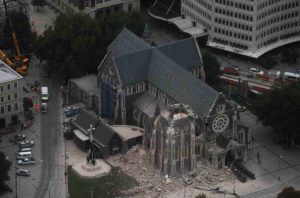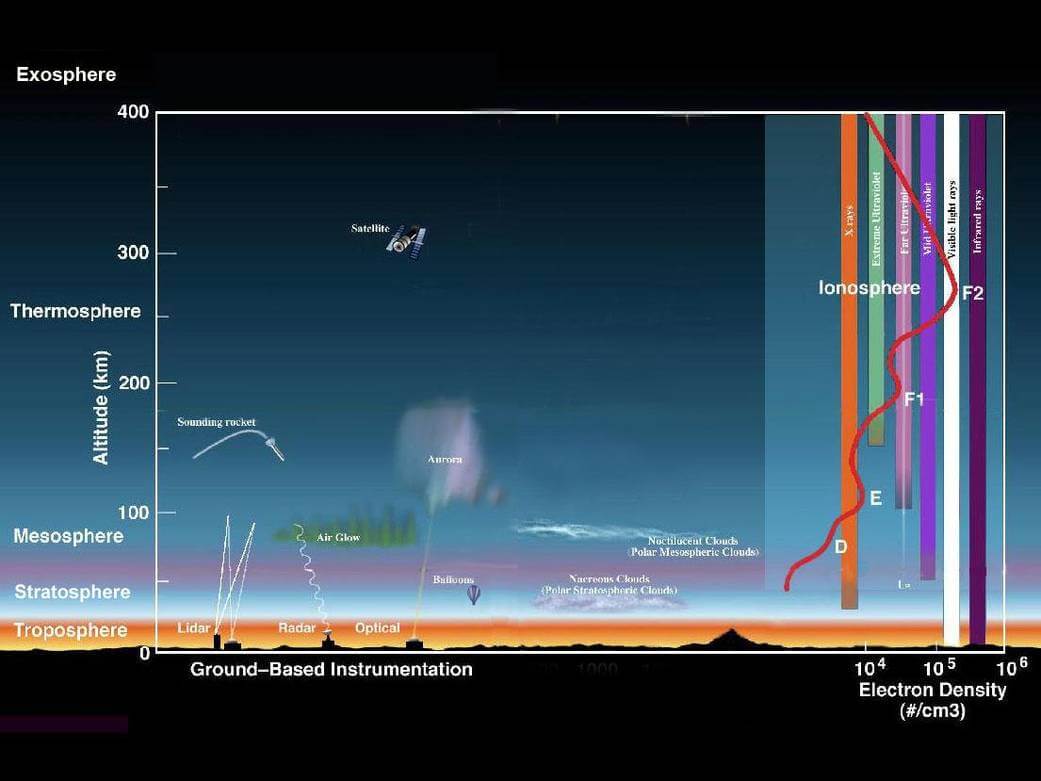In the fall of 2010, I traveled to New Zealand, and one of the places I visited was the small south island city of Christchurch. I was charmed by the tree-lined Avon River, the English-style cathedral in the main square, and the mountains looming in the distance. Inside the cathedral was a stack of poems with a moving message of peace. I saved one to tack on my cork board at home, where it remains to this day.

Three months later I turned on the news to see the Christchurch cathedral splintered and broken, its spire crumbled to the ground. I learnt that the city had been reduced to rubble and 185 people had been killed in a magnitude 6.3 earthquake. I was devastated and could only imagine what those who’d lost their homes or family members were going through. It was eerie to think about how quickly and unexpectedly the city had started to shake.
Unfortunately, the 2011 Christchurch earthquake is just one example of dozens that have rocked the world in recent years, and many of them were far more destructive. Perhaps the most catastrophic was the March 2011 9.0-magnitude quake in northern Japan that unleashed the Fukushima nuclear disaster. Last year in Nepal, a 7.8-magnitude quake razed the city of Kathmandu and killed almost 9,000 people. The 2010 7.0-magnitude earthquake in Haiti killed upwards of a staggering 220,000 and displaced 64,000 more.
Witnessing the havoc that can be wreaked by a shift in the earth’s crust makes us feel tiny amidst the vastness of time and space; to us, earthquakes are tragic, life-altering disasters, but to the planet, they’re just a minor repositioning of tectonic plates, an ongoing process over millions of years. The most frustrating part is that we can do absolutely nothing about an earthquake except deal with its aftermath.
But what if we could do more? What if we knew when and where the next city-toppling quake was going to happen, and we had time to prepare? Scientists are working on an earthquake prediction method that combines semiconductor physics with artificial intelligence. The physics component is known as the lithosphere-atmosphere-ionosphere coupling mechanism.
The What?
We all know the atmosphere is that big bubble of oxygen and other gases around earth (the thing that allows us to breathe). The lithosphere is the solid outer layer of the planet, consisting of earth’s crust and upper mantle (the thing we walk around on). The ionosphere is an upper layer of the atmosphere, above the troposphere and stratosphere and overlapping with the mesosphere and thermosphere. It’s the thing you may never have heard of until now but is actually kind of important to your daily life.

Solar radiation in the ionosphere transfers so much energy to atoms that their electrons are able to detach. The electrons behave as free particles, and the atoms become ions, taking on a positive charge. Besides being a major player in the earthquake prediction method discussed here, the ionosphere is important because it’s the layer of the atmosphere that reflects electromagnetic waves back to Earth and enables radio communication. The ionosphere shrinks and grows depending on the amount of radiation it’s getting from the sun, so the ionosphere in a given region is always larger during the day than at night.
And This Relates to Earthquakes Because…
In the days leading up to an earthquake, the stressed fault releases more gases, especially the colorless, odorless gas radon. Radon triggers increased ionization of atoms in the ionosphere, and the resulting ions attract water molecules. This large-scale condensation process releases heat, which scientists can detect in the form of infrared radiation.
The April 2015 earthquake in Nepal was retrospectively analyzed for lithosphere-atmosphere-ionosphere coupling data. Scientists found a spike in infrared radiation in the ionosphere above the earthquake’s epicenter three days before it occurred, and a similar spike eight days before the aftershock. There was increased ionization over Japan before the 2011 Tohoku earthquake and a spike in radio wave emissions near Haiti before the 2010 quake there.
Prove It
Using lithosphere-atmosphere-ionosphere coupling to predict earthquakes is still a very young science. To be able to rely on this method or use it as a warning system, much more data aggregation is necessary. How often are there spikes in ionospheric radiation without a subsequent earthquake? Why does radiation sometimes reach its peak three days before a quake and other times take five or six days? Scientists will need to look at data from hundreds of earthquakes over time to develop a reliable model.
Enter Artificial Intelligence
By harnessing the power of machine learning, we may end up with a reliable earthquake prediction model sooner rather than later. Enough historical data linking ionospheric activity to earthquakes needs to be collected in order to generate patterns, and the patterns then need to be matched to real-time data. The sheer volume of data that needs to be analyzed to make this prediction method a reality would have been impossible before the advent of modern pattern recognition. Supercomputers like IBM’s Watson sift through terabytes of data in a fraction of the time it would take humans to do so, reducing two weeks worth of work to just ten minutes.
Companies like GeoCosmo and Terra Seismic are working on earthquake prediction algorithms that integrate lithosphere-atmosphere-ionosphere coupling data with related indicators like changes in ground water level and ground conductivity. GeoCosmo has accurately forecast twenty different earthquakes in North and South America up to seven days before they happened. The company is integrating a cellphone app into its system; called the Cellphone Sensor Project, the app sends users lightweight bursts of data that allow phones’ magnetometers to collect and send data about the strength of magnetic fields in their locations. Their goal is to be able to leverage one billion cellphone magnetometers in the most seismically active regions of the world.
Hope for the Future
When the Tohoku earthquake hit, Tokyo residents received a one-minute warning via Japan’s earthquake early warning system. High-speed trains and factory assembly lines were stopped and buildings were evacuated. Nonetheless, the death toll according to Japan’s National Police Agency was 15,891.
How might this number have shrunk if the Japanese people had had three days or a week to prepare instead of one minute? Granted, in this case, a large portion of the death toll was caused by the tsunami, and even if we can forecast an earthquake we won’t be able to predict all of its byproducts. But many more lives will be saved and disasters like Fukushima averted as physics and artificial intelligence refine their ability to accurately predict earthquakes.
GeoCosmo Chairman and Chief Scientist Friedemann Freund says, “The total energy released during a magnitude 9.0 earthquake is equivalent to the explosion of two million atomic bombs of the Hiroshima class simultaneously. I find it incomprehensible from a physics perspective that a process that releases so much energy in the moment of rupture will not express itself in some recognizable way before the rupture occurs.”
I’m no physicist, but it sounds to me like he may be onto something.
Image credit: Shutterstock



